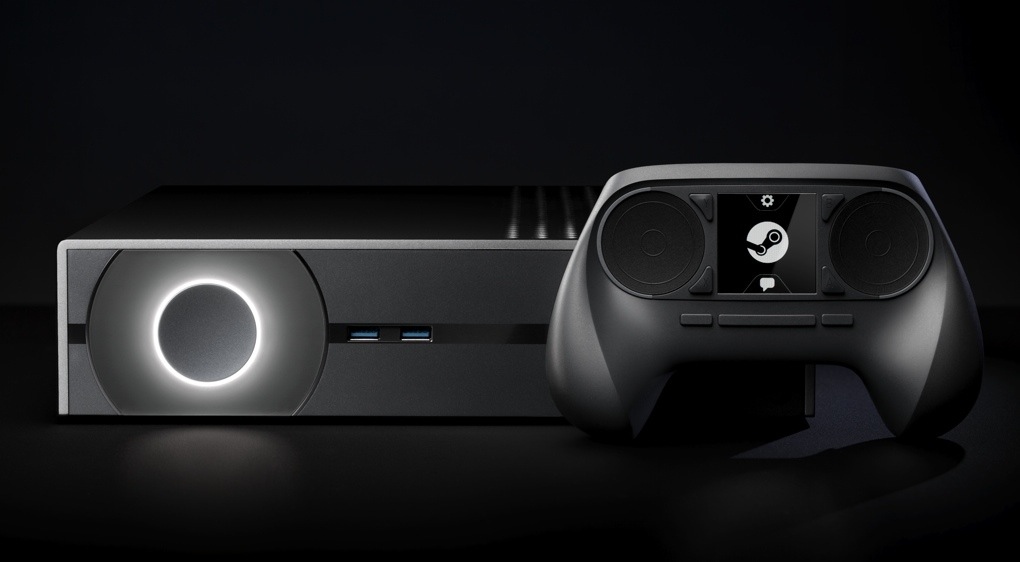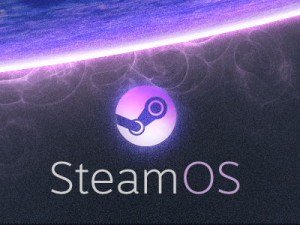Valve’s Steam Machine: a Load of Hot Air?
The ever-enterprising minds behind the eponymous, and disgustingly successful, software development studio that constitutes the Washington-based company hereto known as Valve Corporation have been notoriously quiet these last few years, with many of its most loyal followers pondering the fate of the, now mythical, third entry in its critically-acclaimed Half-Life series. Not content, it would appear, with resting on their collective laurels, the secretive men and women over at Valve have been happily beavering away on their latest project that is predicted to raise the stakes in the increasingly venomous console war. Known as the Steam Machine, these new gaming devices from the eggheads at Valve Corporation are being promoted as an ‘alternative entry’ in the ongoing sectarian struggle between Sony and Microsoft for dominion of the living room.
Since the launch of Steam back in 2003, Valve has become increasingly focused on expanding its digital distribution platform into an array of different areas – including Apple and Linux-based operating systems. Originally derided by PC enthusiasts as a stylish manifestation of DRM (Digital Rights Management) when it pre-empted the launch of Half-Life 2 in 2004, Steam has grown over the last decade to become the No. 1 digital distribution and communications platform on the internet, comprising roughly 75% of all PC sales today. Steam Machine is the next logical step for Valve Corporation in their unabating pursuit of third-party hegemony, affording them an opening salvo in their quest to (unofficially) challenge the triple entente of gaming: Microsoft, Sony and Nintendo.

One of the Steam Box ‘prototypes’ that Valve hopes will reflect the final product when it launches later this year.
Valve has no intention of marketing the Steam Machine as a gaming console, however, but as a branded configuration of PC components – utlising the latest in its shiny new linux-based operating system, or SteamOS as it’s known. The Steam Machine itself will be available in a variety of different retail versions, manufactured on Valve’s behalf by a number of seperate hardware proprietors (including partners at Alienware and CyberPowerPC). Much like any standard PC on the market today, the Steam Machine itself can be modified, or even upgraded, according to the consumer’s personal taste and budget, affording the hardware a degree of customisation that is currently unattainable by modern console configurations – such as the PlayStation 4 and Xbox one. To this day, it remains unclear how Valve’s ambitious Steam Machine project will differentiate itself from the current crop of competitors, since the key attribute within its design – specifically SteamOS – is already currently available on PC, with an active user base exceeding 7.1 million players.
Rumoured to cost somewhere in the region of $500 (comparable to the Xbox One), the Steam Machine (playfully dubbed the ‘Gabestation‘ after Valve CEO Gabe Newell) will be compatible with Valve Corporation’s recently announced Steam Controller. Designed with a similar setup to a regular games controller, the Steam Controller features two owl-shaped, clickable trackpads that – supposedly – offer a much greater level of precision, thanks to its highly publicised ‘haptic feedback’ component. Additionally, the device is said to be capable of ‘tricking’ older Steam titles into thinking the player is using a regular mouse and keyboard, but Valve has yet to show this feature in action. Without sufficient validation to support these capabilities, many gamers are understandably sceptical about Valve’s new controller, having come from a primarily PC-oriented background.
Described as a ‘console-esque experience’, Valve’s SteamOS (which comes installed with the hardware) hopes to improve the way that gamers access and play Steam titles, subverting Microsoft and Apple’s restrictive monopoly of the OS market in favour of open source software that can be further enhanced and adapted by the user. However, SteamOS features little beyond playing games and web browser functionality, rendering it unsuitable for ad hoc tasks that require extensive file management, or unsupported software utilisation – such as iTunes, or EA’s digital Origin platform.
One feature, in particular, which almost assuredly works in the system’s favour is, of course, the vast library of exclusive PC titles – including over 3000 games – that call Steam their home. As mentioned previously, Steam accounts for over 75% of game sales on the PC and the overwhelming majority of pending future releases will make use of the service to help generate revenue, including many indie developers. Just how well this smorgasbord of games will run on the new hardware is yet to be determined but, once again, it raises an interesting conundrum about what, if any, advantages the Steam Machine has to offer which cannot be attained on existing systems, since the availability of games will be universal to every platform.
Valve has already explicitly cautioned third-party developers about publishing games exclusively for SteamOS (and Valve, for their part, have said they will also refrain from doing so) but are adamant that Steam Machine will enable players to access content from a regular PC running Steam, whether they’re running Windows or OS X. Surely, addressed from this perspective, Valve’s Steam Machine appears little more than an extension of their open source strategy, which began back in 2012 with their shift towards a linux-based client.
Valve’s Steam Machine is irrefutably an ‘interesting idea’, managing to balance the affordability found within the mainstream console market with the gushingly raw computational grunt of a modern PC. The notion of a games console that can be regularly upgraded, similar to a PC, whenever it becomes antiquated is an enticing factor and one that may be more than capable of finding a sizeable chunk of audience when it launches later this year. The real threat to this concept stems from Sony and Microsoft. These two giants have poured years and countless millions into establishing an international brand that supercedes any aggressive marketing ploy instituted at the behest of Valve. This unfortunate truth means that this ‘interesting idea’ risks falling by the wayside in the midst of this year’s frenzied clamour for a ‘real next-gen experience’ that is purportedly afforded by the PS4 and Xbox One.




